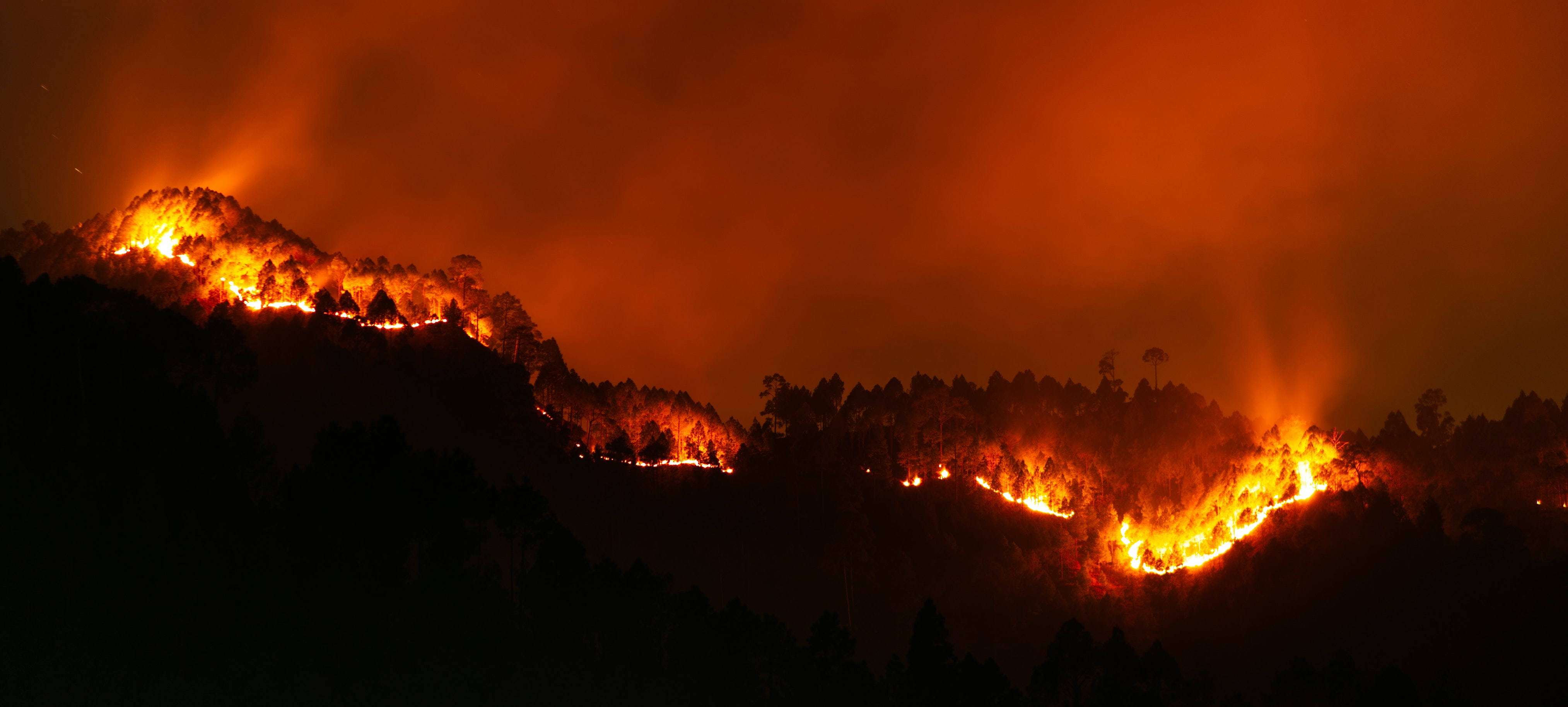
This photo, taken by Arnav Kainthola from Pexels, shows a forest fire scorching the earth and sky in India.
July 20, 2021. Seems like ages ago, right? So much has happened since then. So much happens every day. But that’s the day—that’s the morning—where this story begins.
I was in lower Manhattan, New York City, where we live. Our little walk-up apartment is downtown, about a mile north of where the Twin Towers used to be. We were here that morning, too: September 11, 2001. The sight of the ruptured towers, the smells, the sounds, the smoke… all that fear and anxiety get triggered simply by seeing a photograph from then. Sometimes even looking at one of our family photos with the seemingly invincible, iconic towers in the background will stop my breath for a bit.
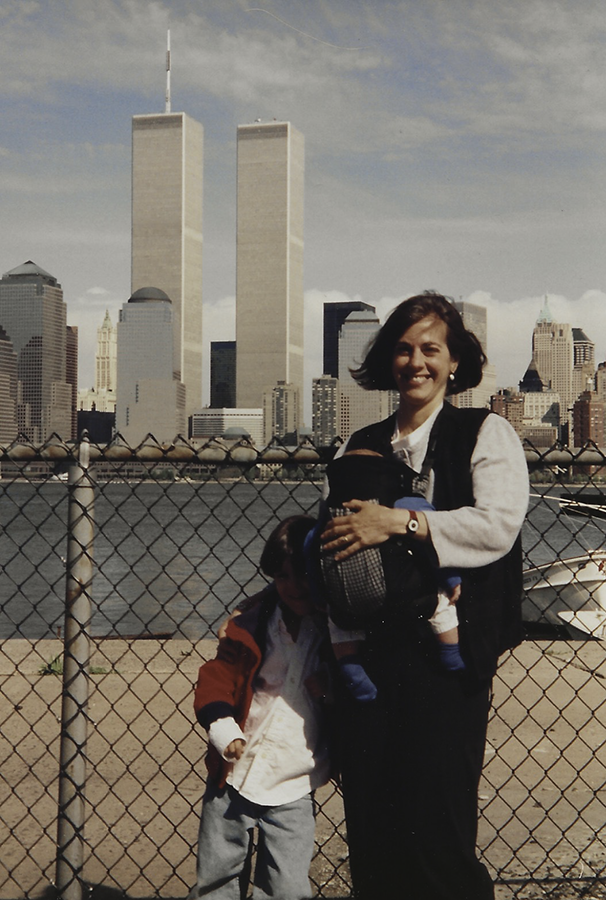
My husband’s snapshot of our sons and me. (1996)
The morning of this past July, though, NYC’s gritty city skies didn’t come from terrorists plowing planes into nearby buildings. Rather, the smoke came from thousands of miles away—charred, scarred winds, coughed up by the fire-ravaged west coast of the United States and Canada.

Another New York icon, the Statue of Liberty, poised to welcome people, not pollution.
July 21, 2021. © Hope Lourie Killcoyne
Stop and Take a Breath
Go on, breathe in. Breathe out. Let’s think about breathing for a bit.
We can all thank marine plants (phytoplankton) for creating most of the world’s oxygen. The ocean also absorbs about a third of Earth’s carbon dioxide. It used to be that land plants—notably trees in rain forests and woodlands—stepped up, too, storing nearly 25% of the CO₂. Used to be.
Now, deforestation (usually done by setting fires), is a lose-lose scenario: said fires not only release CO₂—and since 2010, that amount is nearly 20% more than it absorbed—the very act kills trees that could have absorbed the carbon.
Why would we thoughtlessly cut off this lifeline—a small but much-needed part of nature’s oxygen tank and carbon sink? Too many of us appreciate neither the forest nor the trees (though with the enforced confinement brought by Covid-19, there has been a slight realignment).

A closed luncheonette in Gowanus, Brooklyn.
July 28, 2021. © Hope Lourie Killcoyne
Thing is, forest fires don’t wait for us to be aware and prepared, let alone grateful; nor do they wait for politicians to calculate yet more of their greenwashing gambits.
Once the wind is in their fiery sails, flames from burning trees en masse are exceedingly hard to curtail. And as you might have guessed from this article’s title, there is—however ironic—a lasting consequence in putting out flames: smoke.
Smoke spreads much farther than flames, and dangerously smoky winds cannot be constrained. Smoke does not recognize borders, so air is not a local issue. And as the Earth’s lungs are already in serious jeopardy, ours are next.
Particulate Matter
Around the world, people tuned in and saw huge forest fires mercilessly stomping across North America’s west coast.
Visuals showing spiralling plumes of smoke are out there, too. What no one could see, though—at least not without an electron microscope—were untold numbers of tiny pollutants surfing along with that smoke. These dangerous particles, called PM2.5 (PM stands for particulate matter), are less than 2.5 microns in diameter, waaay smaller than the full stop (period) at the end of this sentence.
By way of comparison, a single strand of hair is 30 times wider... PM2.5 is as small as it is threatening. And to it, size doesn’t matter; wind does. Because with the wind in its sails, it does sail—sometimes for thousands of miles. And then it drops, as happened on July 20, 2021.

This diagram, courtesy of the EPA, compares the size of sand, hair, and larger particles that also get inhaled—PM10 (in blue)—to the teeny-tiny bad guy of this story: PM2.5 (the littlest pink dots, lower right).
The United States Environmental Protection Agency (EPA) does what the name implies: strive to protect the environment. It does so by monitoring what’s happening pollution-wise in the States, publicizing that information, and, as necessary, using its powers to enforce compliance.
Now, aiming to hold a business accountable for crossing a line is one thing. Doing so for forest fires is not.
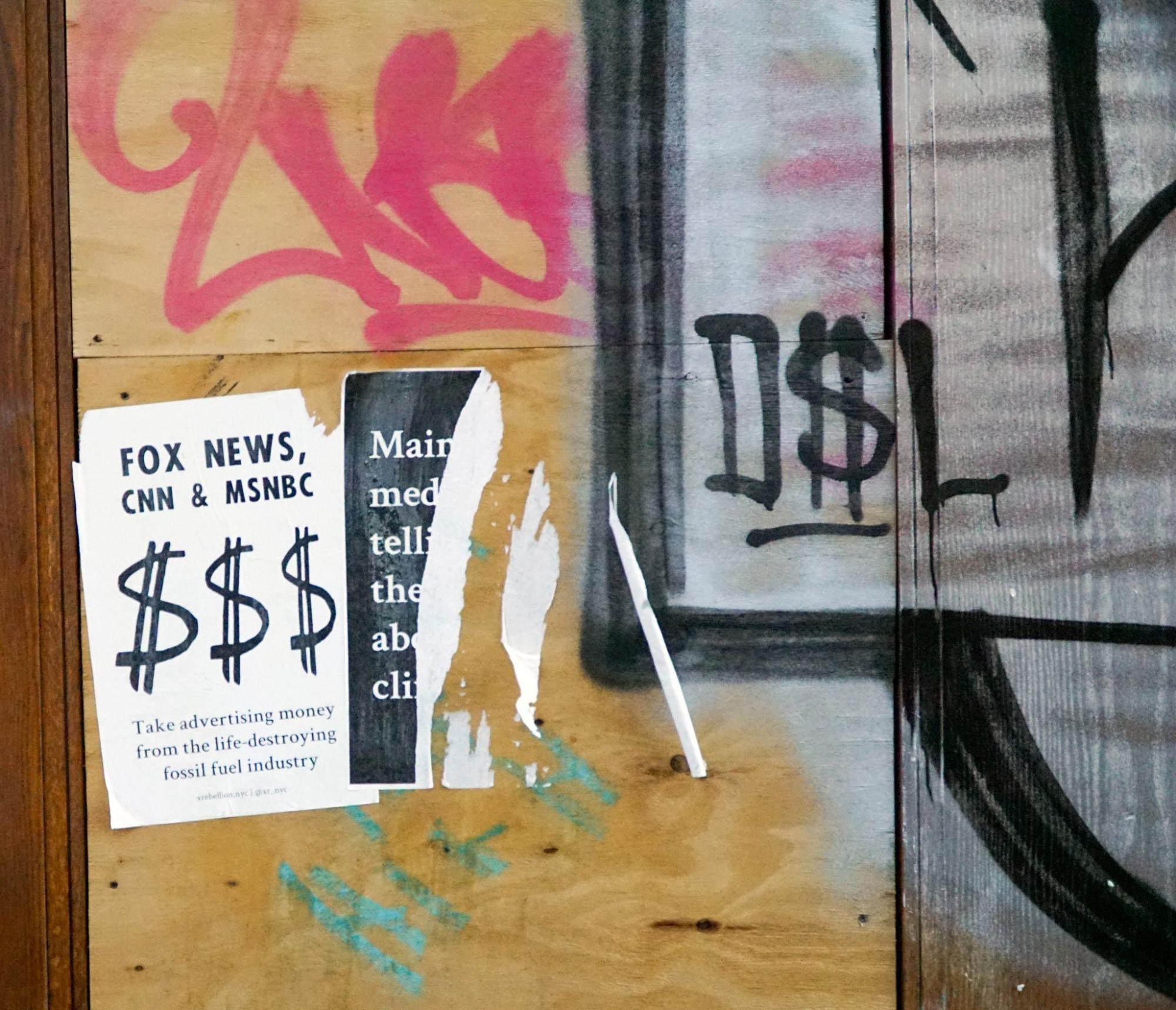
This XR_NYC sign, posted on an abandoned storefront, holds television news channels accountable by calling out Fox, CNN, and MSNBC for taking “...advertising money from the life-destroying fossil fuel industry.”
April 23, 2021. © Hope Lourie Killcoyne
So, when it comes to the unprecedented barrage of forest fires—the $1 billion the United States spends every year to fight wildfires notwithstanding—the best that the EPA can do is document the data and put it out there. With the AirNow Interactive Map, anyone can plug in the time, day, and location of what they want to observe.
(AirNow.gov, which works with the EPA and other U.S. agencies, provides air-quality data and a bunch of resources. It’s a very cool site, well worth visiting, even if you’re not in Canada, Mexico, or the U.S.)
The screenshots below show the day an untold amount of PM2.5 appeared… and, quite tellingly, the day before.
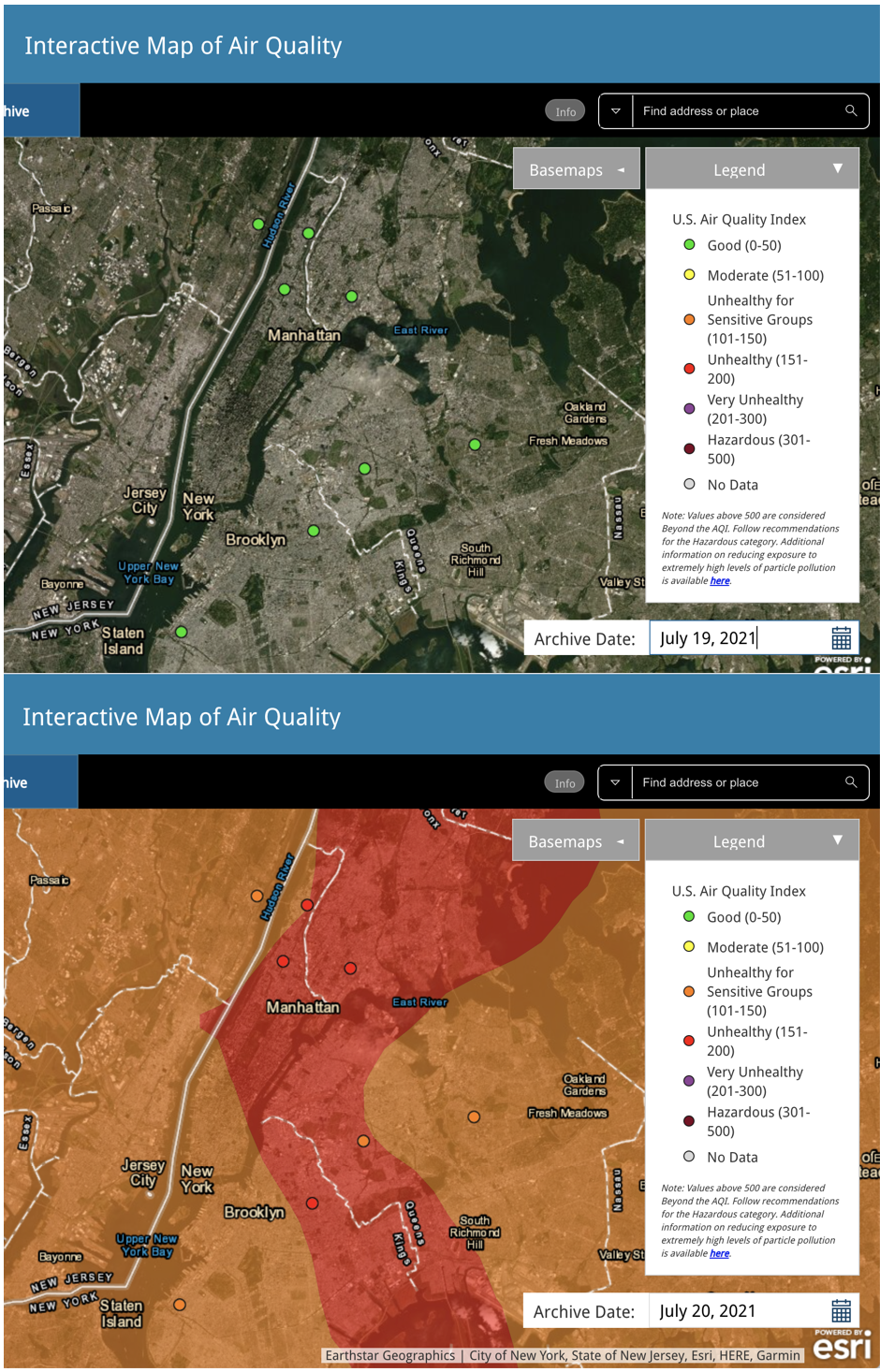
The day before and the day of. Pretty striking difference. The day after—July 21—was also notably grizzled.
Where I am, in North America, as in far too many places the world over—Siberia, Algeria, Greece, and Australia, to name a few—wildfires are increasingly unstoppable. The immediate death and destruction they cause is harrowing; the incalculable lasting destruction is, as well.
Our Lungs: Worth Considering
When you think about yours, do you think pink? After all, that’s the color often assigned to them.
But let’s say you’re a med student—one from the most polluted part of New York City, The Bronx. And you’re studying pulmonology. Still think pink would be the go-to color?
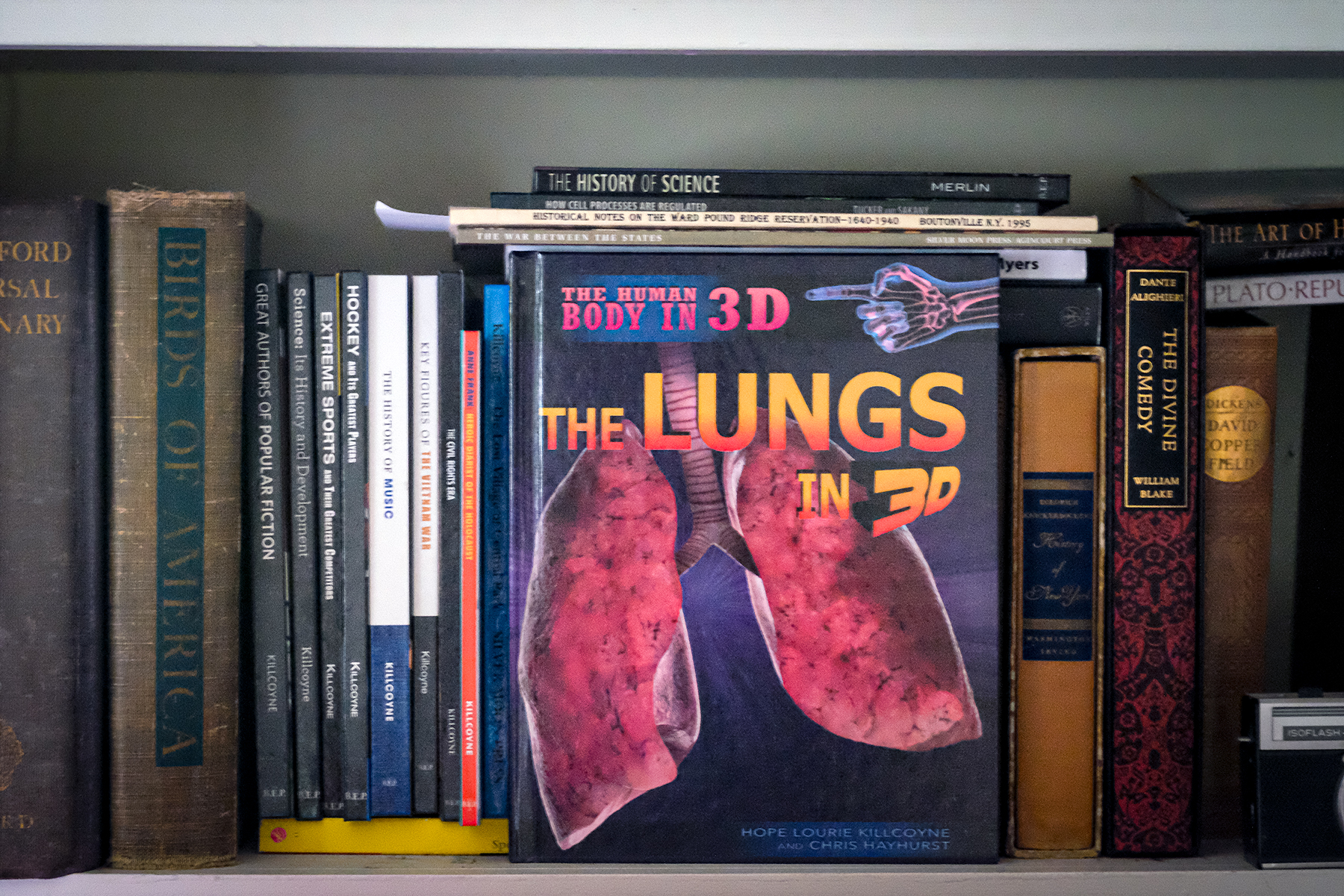
“The Lungs in 3D,” on our bookshelf.
Let’s look at this example, from the intro for a kids’ book I wrote, “The Lungs in 3D.” It features one of my dad’s real-life experiences:
In 1961, as a twenty-five-year-old medical student at the University of Basel in Switzerland, Ronald Chodosh, born and raised in the Bronx, New York, had a startling moment during his first autopsy, which he performed on an elderly Swiss man. The lungs of this near-ninety-year-old, who had spent his entire life in the hills of the Swiss countryside, were a lovely shade of pink. Not surprising, you say? That’s how lungs are depicted in images everywhere—from television to the internet to the illustrations within these very pages. That is true. But in real life, lungs don’t stay pink for long. In the autopsies Chodosh had observed back in New York City, lungs—even those of young people—were, at best, grey, beige, or brown. And those of smokers were far darker, with patches of blackish charcoal scattered about.
Lungs are indeed our sponges, filtering the air we breathe.
Of course, as long as we have agency over our own bodies, we can try to protect our “sponges” by not actively inviting smoke inside—that is, by not smoking.
As for smoke from other, huge sources—smoke that hurts us and the Earth? The best move there is being proactive: it is far better to prevent a wildfire than being forced to put one out. The prefix “wild” ain’t there for nothing.
Perhaps this list of nine alarming facts about wildfire smoke below can be employed as a way to shake up people who think distance from fires can let them breathe easily.
Because, XR rebel, for those of us determined to provide emergency care for our planet, it is time to use our bodies and voices—yeah: our lungs.
From Particles to Planet: Nine Alarming Facts About Wildfire Smoke
1. You Can Run but you cannot hide
Smoke near fires is indisputably toxic, but July 20, 2021, marked NYC’s worst air quality in 15 years.
At low altitudes, wildfire smoke can travel for hundreds of miles. But, should the smoke rise just a few miles up, into the jet stream, its pollutants can travel for thousands of miles.
Again, distance does not equal safety.
As you read earlier, smoke blown for thousands of miles brings a polluting particle miniscule in size, but potentially massive in consequences.
And lest anyone feel protected huddling at home, AirNow reminds us that “Wildfire smoke… from outdoors can also enter your home and make it unhealthy to breathe indoor air, too."
2. Wildfire Smoke is a Health Hazard
A page written in advance of the 2021 fire season, “Wildfires and Smoke,” includes these warnings about PM:
The primary pollutant of concern in smoke is particle pollution, often referred to as particulate matter, or PM. The health effects from exposure to the particles in smoke can range from relatively minor (eye and respiratory tract irritation) to serious (exacerbation of asthma and heart failure, and premature death).
While most healthy adults and children will recover quickly from wildfire smoke exposure, certain populations may be at greater risk of experiencing health effects, including people with respiratory or cardiovascular diseases, children, older adults, pregnant women, and outdoor workers.
Toward the end of writing this article, the Lancet Planetary Health journal published THE largest global study (covering roughly 750 cities in over 40 countries) specifically on risk of death due to “wildfire-related PM2.5 pollution.”
The 16-year study, conducted by over 70 experts, has many disturbing revelations regarding cardiovascular and respiratory mortality rates. Having identified wildfire-related PM2.5 as being even more toxic than PM2.5 from urban sources, the authors implore policy makers and health professionals to take “urgent action… to reduce health risks from the increasing wildfires.”
3. Smoke Exacerbates Pre-existing Health Conditions
For people with problems breathing on a good day, the smaller particulate matter—PM2.5—can cause asthma, strokes, and heart attacks.
Underlying health conditions are clearly a risk. So, too, are poor (or non-existent) networks of communication between health officials and existing patients—not to mention with communities at large.
And healthy people? Should they be worried about working out? Seems so...
4. Wildfire Smoke is a Climate Justice Issue
Wherever money and medical help are scant, residents and institutions there are put at increased risk. In a nutshell, relying on care is a much bigger ask in poor communities.
For starters, there is huge income inequality in America. Compound that chasm with the country’s ravenous, for-profit, multi-billion-dollar medical system, and you get ever-growing, increasingly surging, healthcare inequities.
The author of an investigation tracking the health of over 5 million Americans for 25 years—Trends in Health Equity in the United States by Race/Ethnicity, Sex, and Income, 1993-2017—stating his goal was focusing on “…health rather than mortality,” said, “there has been a clear lack of progress on health equity during the past 25 years,” concluding, “...the overall pattern is one of stagnation mixed with unambiguous decline” (italics added for emphasis).
Further data shows that some of the very organs smoke targets—lungs and hearts—are already in worse shape among low-income folks: people in poor neighborhoods breathe more hazardous particles.
And the buck—or lack of bucks—doesn’t stop there. According to research by the U.S. Census Bureau, pollution now is linked to widening existing economic rifts as well as impairing the health and education level of future generations.
Lastly, it’s no secret that in this country, poverty, substandard healthcare, and / or skin color are inexorably linked— especially in or near cities. (That italicized “or” means that if you’re Black, it doesn’t matter if you’re richer than the white guy in the waiting room next to you; statistically, he's likely to get better care than you will).
5. Wildfire smoke raises the risk of COVID.

Respirators (front); mask (in the blurry beyond).
Oct. 1, 2021. © Hope Lourie Killcoyne
6. Wildfire smoke also hampers equipment
In this example, instruments used to monitor ozone—yet another threat to compromised lungs—caused anything from “severe operational interference” to “irreversible damage to instrument components.”
7. In 2021, fires and their smoke created unheard-of emergencies
Wildfires in the U.S. are not new, but they are getting worse. Such is the case even more so in fire-scarred Australia, where politicians delaying “meaningful actions”—layered with a paucity of climate-change-attributed news coverage—meant that “each succeeding fire reinvigorated the opponents of environmentalism.”
Here in the States, between 1983 and 2020, the area burned by western wildfires has increased nearly tenfold.
One forest fire (so far)—the Bootleg Fire in Oregon—actually produced its own weather, “…triggering lightning and releasing enormous amounts of smoke.”
The toxic twist of climate change ⇨ wildfires ⇨ high levels of air pollution has even generated a new term: “smoke wave.”
8. Fires add fuel to the flame of a hotter future
It’s not just the U.S., and it’s not just wildfires. The whole world should be worrying. A clear, compelling, and dire report from the United Nations is covered in the New York Times: A Hotter Future Is Certain, Climate Panel Warns. But How Hot Is Up to Us.
9. The damage caused by climate change is irreversible
The IPCC—which has been urging action since 1990… perhaps before you were born?—issued this report detailing the urgent need for immediate mitigating action.
You can check out how any place on the planet is doing using their interactive atlas.
Be the light, not the flame.
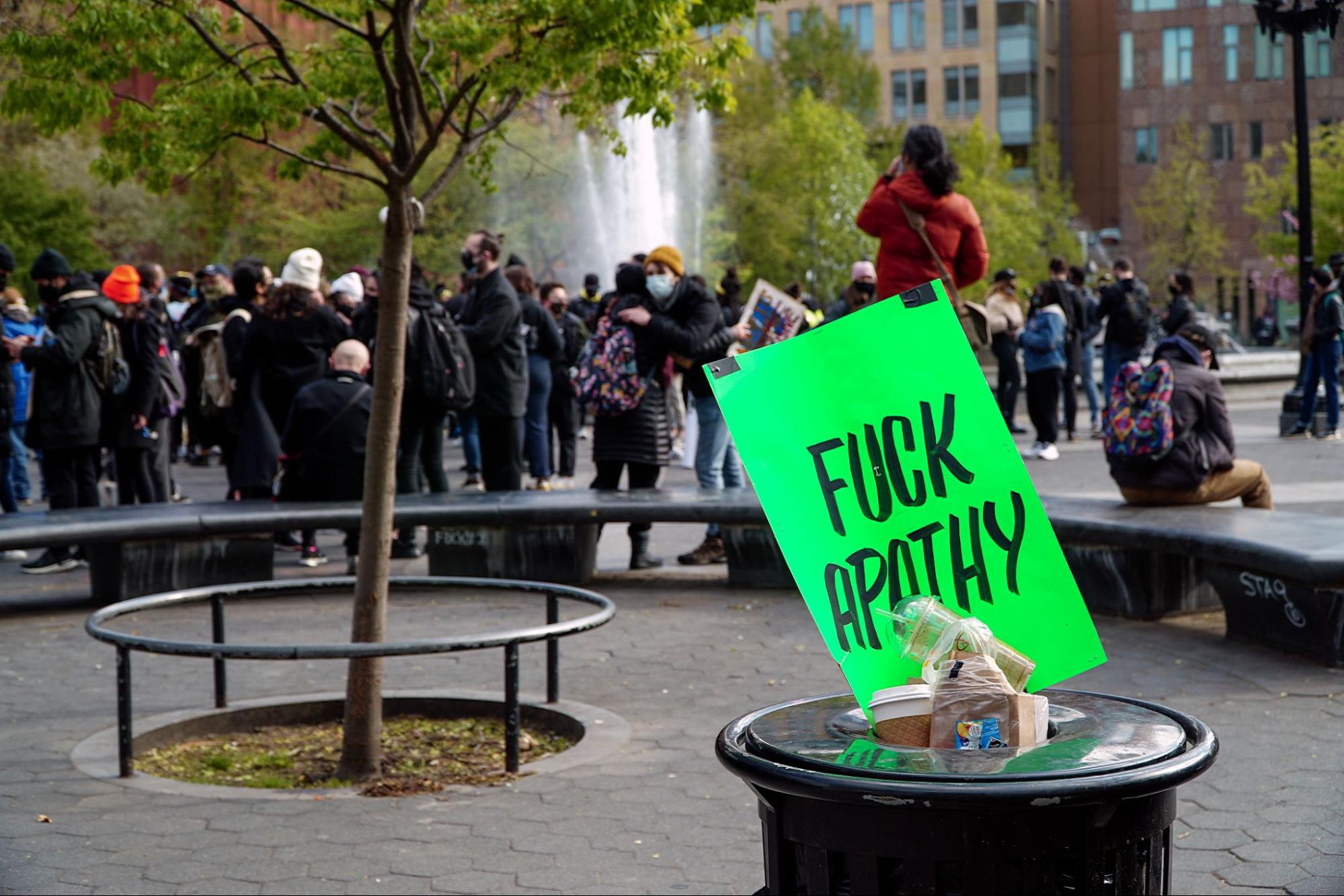
April 22, 2021 © Hope Lourie Killcoyne
Despite being wedged in a garbage can, a bright green Fuck Apathy sign stands tall in New York City’s Washington Square Park. Does its placement send you any message? Irony? Confusion? Motivation?
Like the Twin Towers at the World Trade Center, nothing is invincible. It is far easier to destroy than it is to create. But here’s a very important point: destruction happens not only as direct, planned, and violent activity; but by indirect, unplanned, and passive inactivity. Right. By doing nothing.
Therefore, our best shot at forestalling if not blocking further damage is by uniting and making change happen; we must rebel against the status quo.
Remember: borders mean nothing to fire and smoke. What is required to put out fires? Action. And action is precisely what must be used to prevent them. The more proactive we are in preventing damage, the less reactive we’ll have to be.
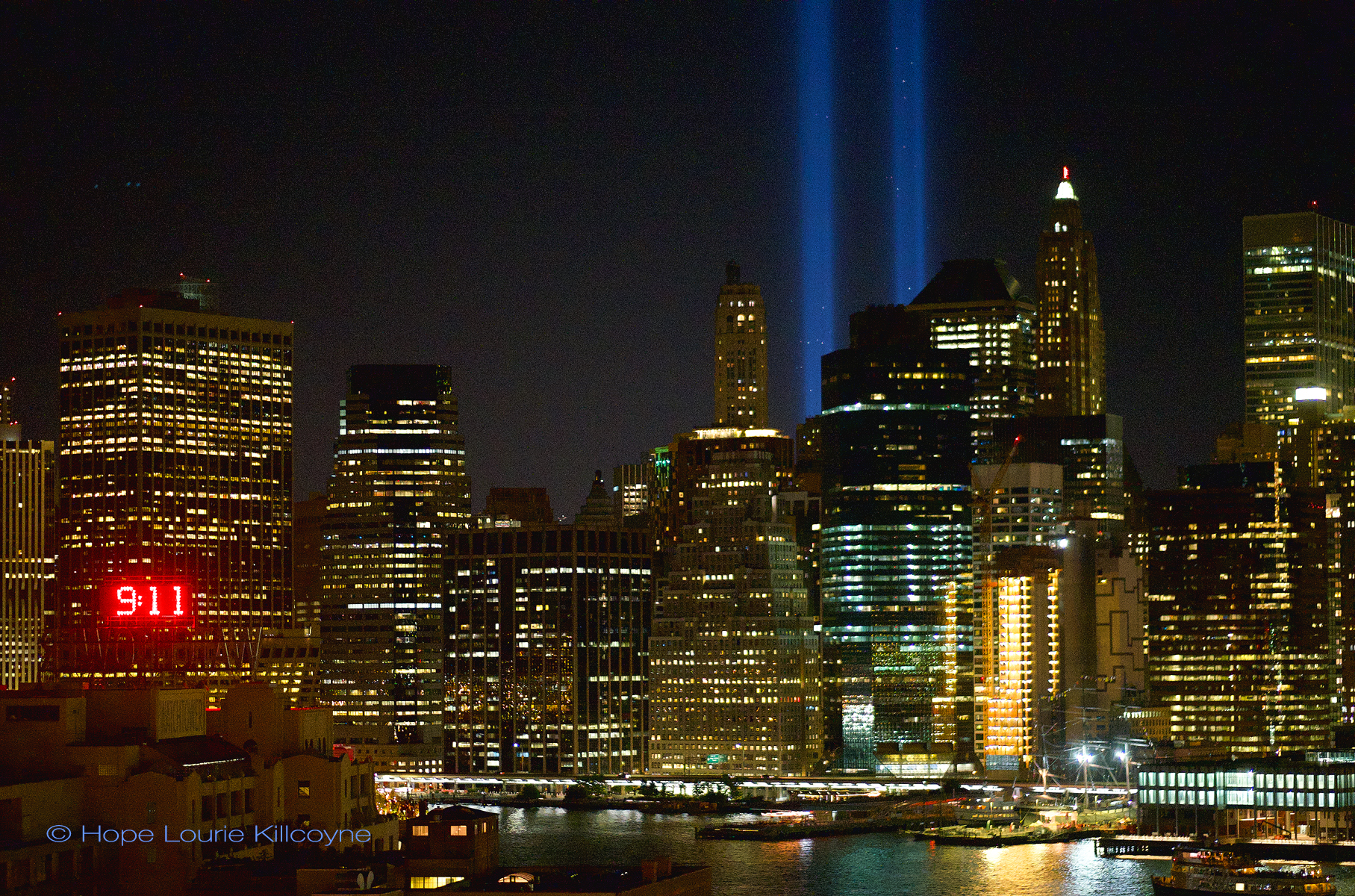
We have power. You have power. If you live in a country where freedom is celebrated, use it. In love. Together.